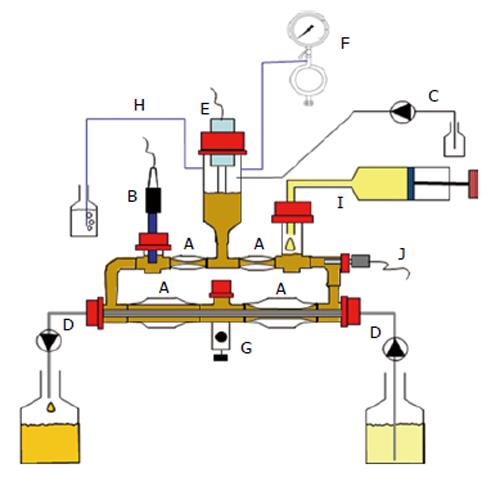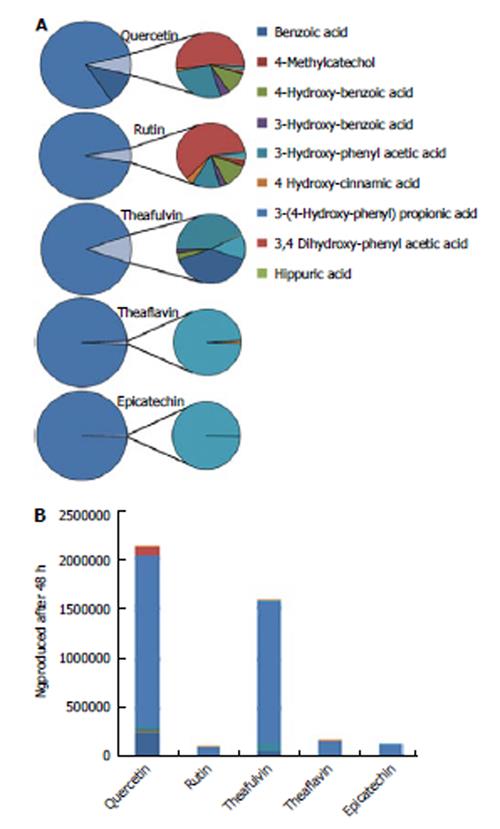Copyright
©2014 Baishideng Publishing Group Co.
World J Gastrointest Oncol. Jan 15, 2014; 6(1): 1-10
Published online Jan 15, 2014. doi: 10.4251/wjgo.v6.i1.1
Published online Jan 15, 2014. doi: 10.4251/wjgo.v6.i1.1
Figure 1 TIM-2 is a validated, computer-controlled system that simulates the human colon.
The model consists of glass units with a flexible wall inside (A); Peristaltic movements, achieved by pumping warm water into the space between the glass unit and the flexible walls at regular intervals, simulate peristaltic movements and allow the lumen to be mixed and transported through the loop-shaped system. The system is kept at body temperature (37 °C). To simulate the pH in the proximal colon, the pH is set at 5.8 and controlled (B) and adjusted by secretion of 2 mol/L NaOH into the system (C). A dialysis membrane consisting of semi-permeable hollow fibres is placed in the lumen (D). Water and fermentation products are removed from the lumen through the dialysis system, thereby maintaining physiological concentrations of microbial metabolites and preventing accumulation of metabolites to toxic levels. Furthermore the model contains an inlet system for the delivery of food (I) and a level sensor to control (E) a constant volume of the luminal content. The system was kept anaerobic by flushing with nitrogen gas (F), which allowed for the growth of a dense, complex microbiota, comparable to that found in the proximal colon of humans. A: Peristaltic compartments containing fecal matter; B: pH electrode; C: Alkali pump; D: Dialysis liquid circuit with hollow fibre membrane; E: Level sensor; F: N2 gas inlet; G: Sampling port; H: Gas outlet; I: “Ileal efflux” container; J: Temperature sensor.
Figure 2 Cumulative production of ‘simple’ phenolic metabolites after 48 h fermentation of different polyphenols in TIM-2.
At time zero a single shot of individuals polyphenols (1 microgram in dimethyl sulfoxide) was introduced into TIM-2 throigh the sampling port (Figure 1G). At regular intervals for the next 48 h samples were taken from the lumen and dialysate and analyzed using LC-MS for the microbial metabolites generated by the gut microbiota. The ratio (bar graph, in percentage) and absolute cumulative production (B; in ng) at t = 48 h of microbial metabolites after fermentation in TIM-2 were subsequently calculated and compared amongst the different polyphenols.
- Citation: Bordonaro M, Venema K, Putri AK, Lazarova D. Approaches that ascertain the role of dietary compounds in colonic cancer cells. World J Gastrointest Oncol 2014; 6(1): 1-10
- URL: https://www.wjgnet.com/1948-5204/full/v6/i1/1.htm
- DOI: https://dx.doi.org/10.4251/wjgo.v6.i1.1














